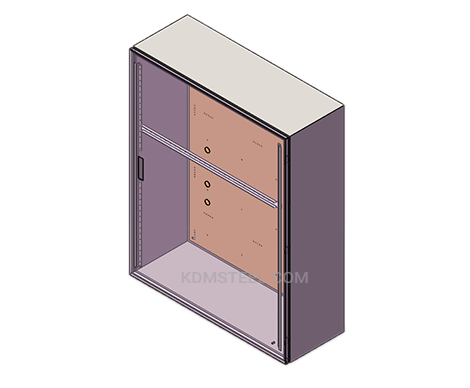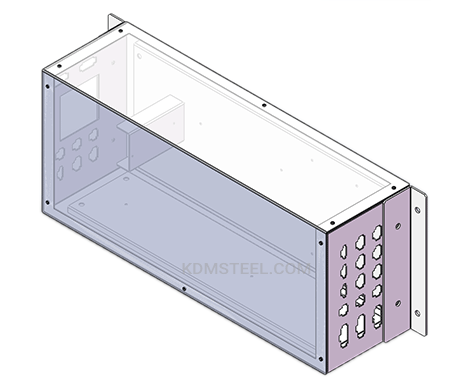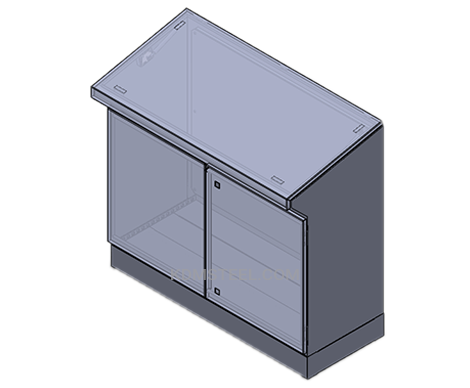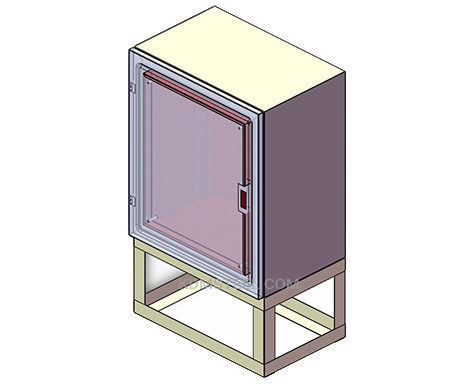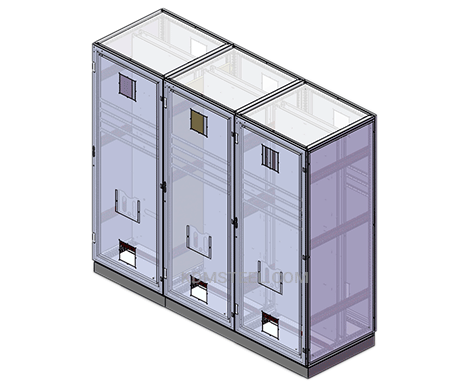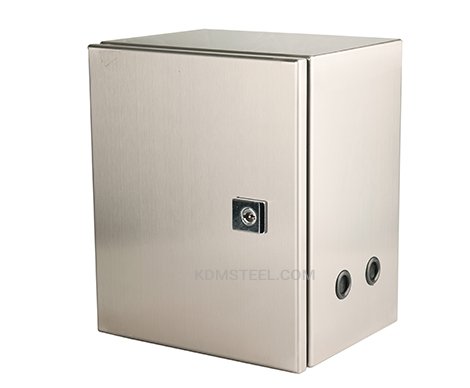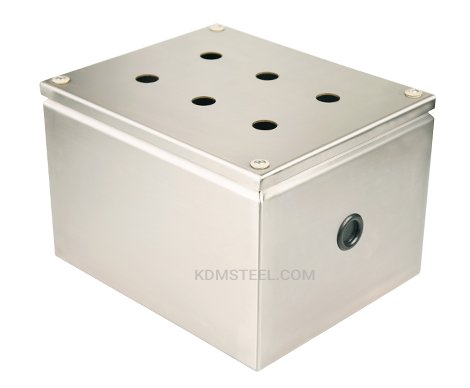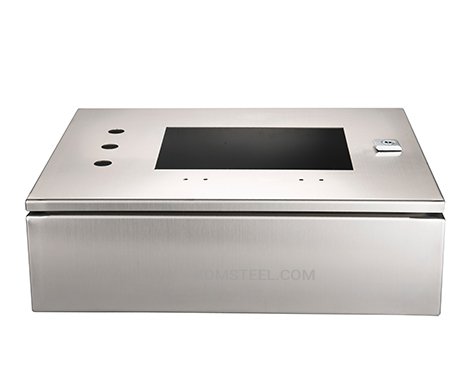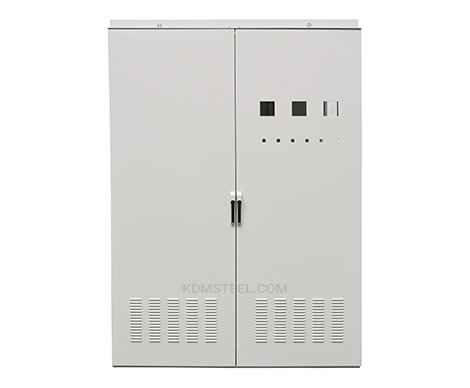- Custom Ip55 or Any IP rating Enclosure
- IP65/IP66 Certification
- Fast Sample Production within 3 days
Your Best IP55 Enclosure Manufacturer in China
KDM IP55 enclosure is suitable for various environments including house electronic equipment, industrial process control, external plant, telecommunications equipment, food, and medical equipment, bespoke application, and many more. KDM IP55 enclosure provides complete protection against contact with live or moving parts inside the enclosure, thus adding protection from water, up to water projected by a nozzle against the enclosure from any direction.
KDM IP55 Enclosures Series
Send your Inquiry on KDM IP55 Enclosures
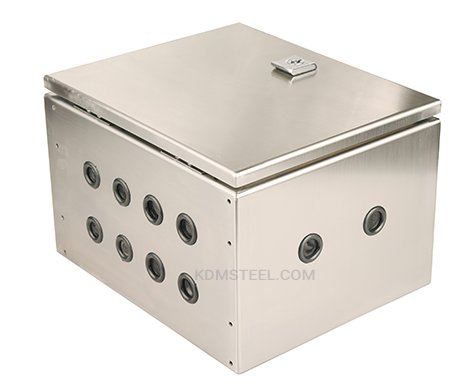
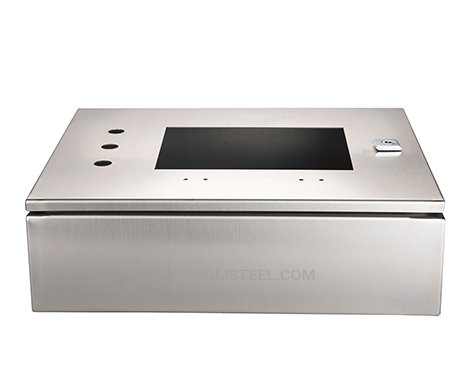
KDM is a professional manufacturer of premium quality electrical enclosures that meet IP55 standards. With over 10 years of experience in the design and fabrication of electrical enclosures, KDM provides custom solutions as per customers’ requests. For further details, please contact KDM today!
- Manufacturing Capacity
- Buying Guide
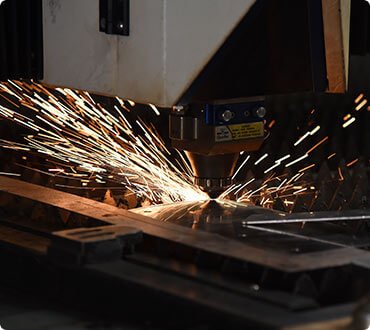
4000W high-performance laser cutting machine, +/- 0.05mm accuracy. No burr, no scratching.
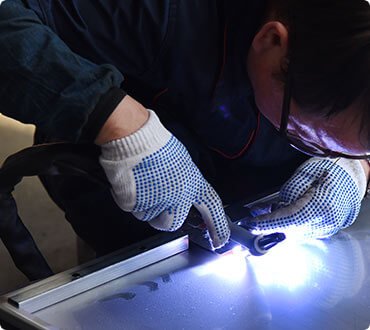
Multi-Functioning flexible welding equipment, high accuracy, no deformation.
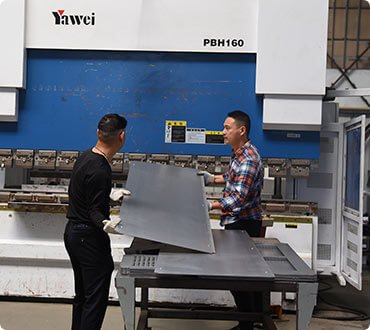
+/- 0.5mm bending precision, smooth surface without bending marks.
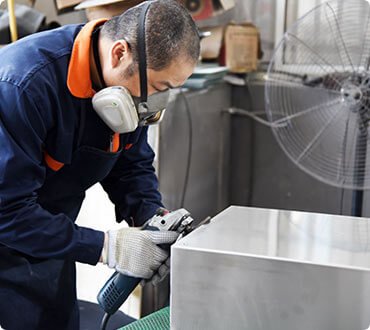
10+ welding experienced workers, perfect overall appearance.
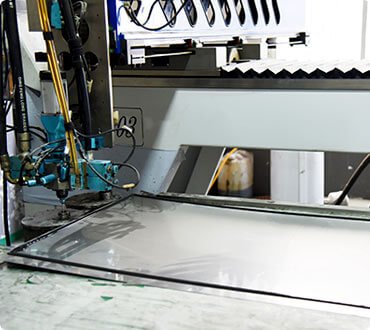
High speed and accuracy foaming machines, fast and qualified Gasket
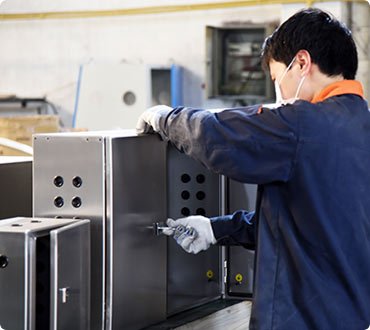
The expert assembling team, consistent assembly quality on every KDM enclosure
KDM IP55 Enclosure
KDM IP55 enclosure is available in special materials including aluminum alloys, stainless steel, galvanized steel, and carbon steel, to meet your application requirements. Our IP55 enclosure is manufactured in the same specialized facility as KDM’s custom products, by the same experienced staff.
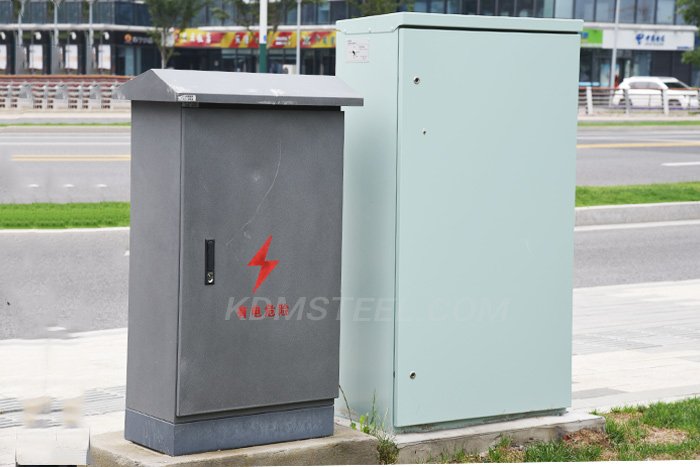
Galvanized IP55 Enclosure
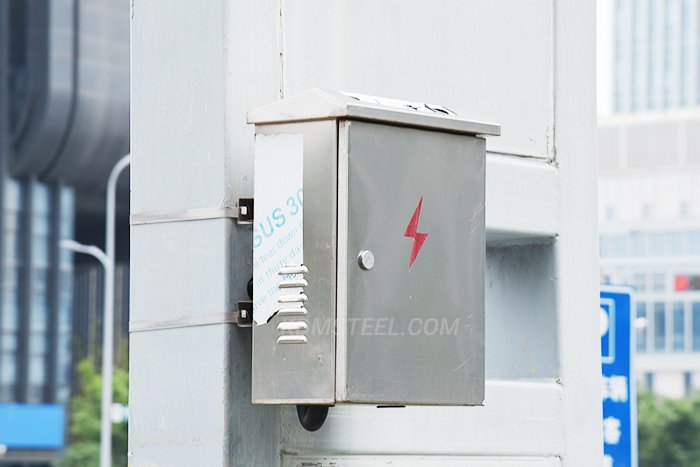
Stainless Steel IP55 Enclosure
KDM offer a wide range of IP55 enclosure which has been independently tested and certified. IP55 enclosure is available in wall-mounted, free standing, floor mount, lockable, junction box, weatherproof, modular, control panel, large, vented and many more. IP55 enclosure adds on including engraving, silk-screening, or anodizing services available.
Our IP55 enclosure can be availed in various attractive designs and sizes. IP55 KDM enclosure can easily installed and has the ability to withstand adverse conditions. In addition to this, KDM IP55 standard enclosure keeps the connection safe and dry, lid simply clips on and easy to use and portable.
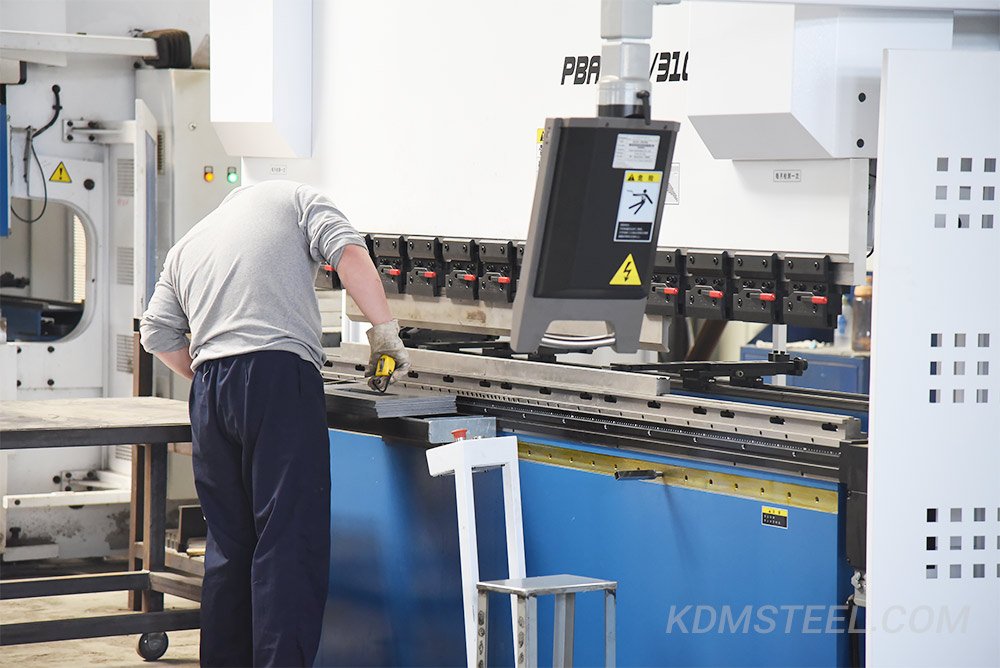
If you didn’t find what you were looking for in our standard product offering. At KDM, we will work on developing a custom enclosure that meets IP55 standards to satisfy your needs. We custom enclosure features including enclosure sizes, cutout and thru holes for mounting HMI’s, operator devices and conduit entries, adjustable inner doors or swing panels, custom colors on powder coated enclosures, silk screening or chemical etching with your company brand or logo.
Another custom enclosure features include mounting panels which can include drilled and tapped holes, pm nuts or studs in any material from powder-coated steel, aluminum, or 304/316 stainless steel. Also, custom hardware available from buckle latches specially keyed locks or ¼ turn latches. Furthermore, specialty finishing that includes anodizing, electropolishing or passivation is customizable. Send us your drawing or even hand sketch to quote or come visit in person and we will help you design the enclosure right on your specific application.
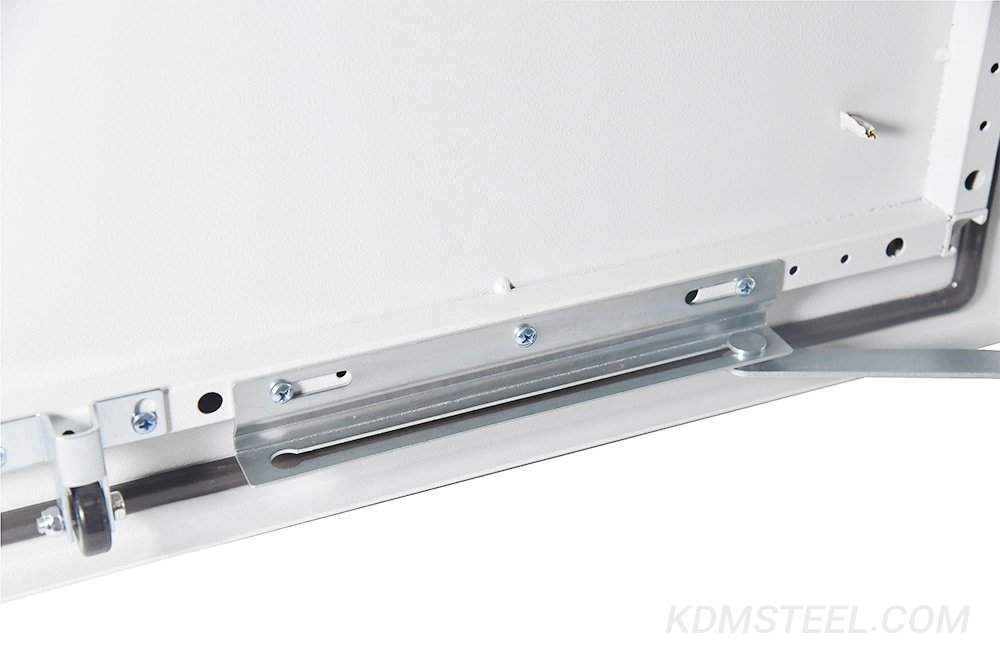
With our IP55 enclosure, we can provide you with superior products and services that will help you gain a competitive advantage in your enclosures. At KDM, we specialized in providing design support to help engineers meet IP rating requirements for enclosures.
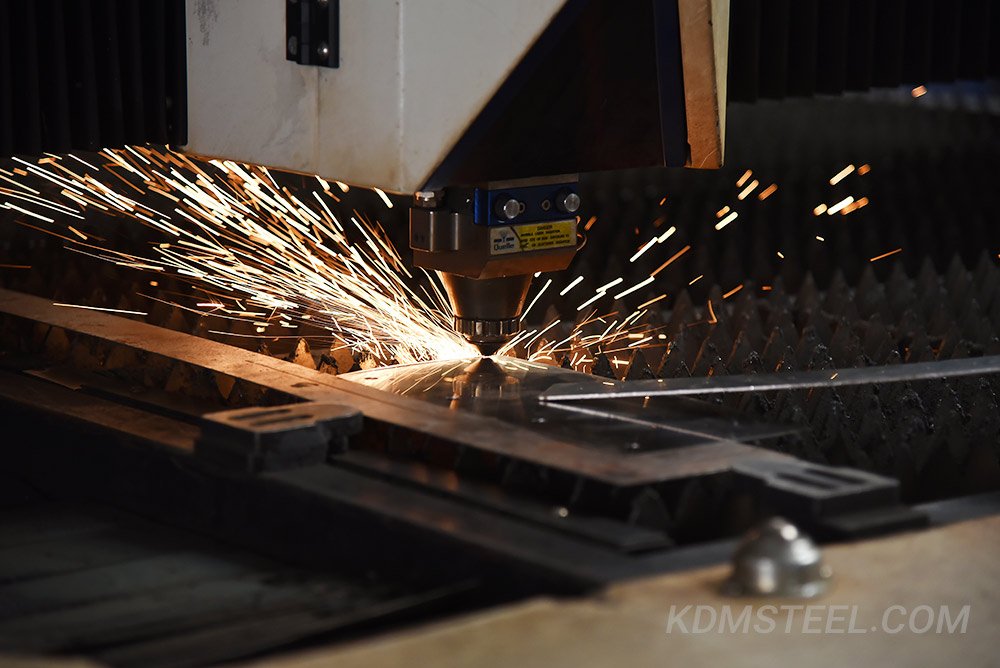
The Ultimate FAQ Guide to IP55 Enclosures
- What does the IP code mean?
- What does IP55 mean?
- What is the difference between IP54 and IP55?
- What is associated with the letters after the main IP code?
- What testing do IP55 enclosures undergo?
- Can IP55 standards be converted into any NEMA type?
- Is IP55 enclosure suitable for outdoor use?
- Are IP55 enclosures waterproof?
- Will IP55 enclosures protect against explosions and arc flash?
- How well will IP55 enclosures protect electrical components against corrosive agents?
- Are IP55 enclosures vulnerable to thermal hazards?
- Where can IP55 enclosures be used and for what applications?
- What designs of IP55 enclosures can I choose from?
- How many doors can an IP55 enclosure have?
- What features can I request for IP55 enclosures?
- What accessories can I request for IP55 enclosures?
- What different types of steel can be used for IP55 enclosures?
- Do locks, windows, vents, and hinges lower the IP rating?
- Can fiberglass be used for IP55 enclosures?
- Why use aluminum for IP55 enclosures?
- What paints and coatings can be used for IP55 enclosures?
- How do you customize the symbols or writing on an IP55 enclosure?
What does the IP code mean?
The IP code stands for Ingress Protection. It is also known as IEC standard 60529.
It is called EN 60529 in Europe.
It consists of 2 numbers after the IP.
The first number corresponds to the level of protection against the ingress of solids, whereas the second digit corresponds to the ingress of liquids.
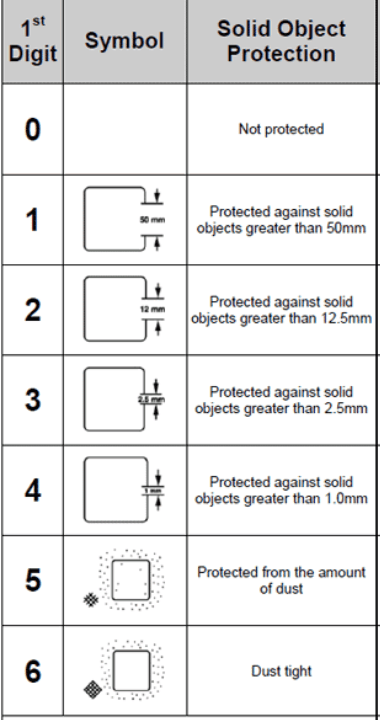
Dust rating of the IP code
For dust, the numbers go from 1 to 6, and for liquids, they go from 1 to 9K.
Enclosures with a dust rating of 1 would protect against anything that is bigger than 50 mm, or 1.9 in.
On the other hand, enclosures that are fully dust-tight protect against any solid particles.
Enclosures with a liquid rating of 1 are effective against dripping water in an upright position, thus, they are protected against rain.
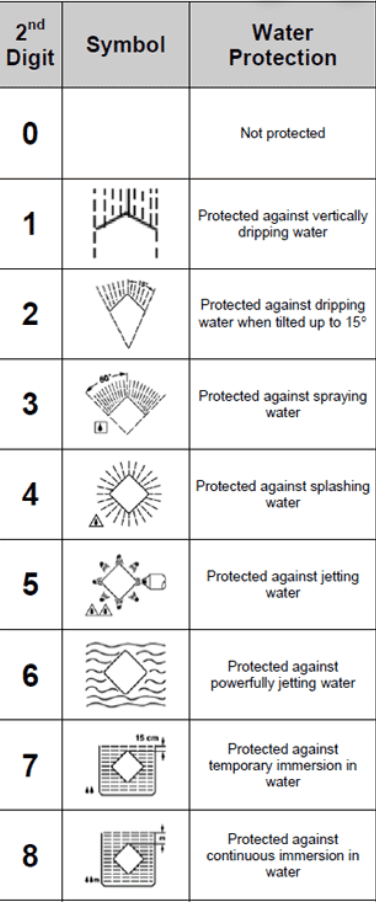
Liquid rating of the IP code
Meanwhile, 9K enclosures are able to withstand pressurized jets of hot water.
There can be a zero marked, which means no protection.
There can also be an “X” mark, which usually means that any number can be put there.
There can be other lettered markings as well.
What does IP55 mean?
Enclosures rated with IP55 are protected against limited dust ingress, and from low-pressure water spray from any direction.
Limited dust ingress means that most dust cannot enter the enclosure, but a small quantity of it can.
However, the dust that does manage to get through is not enough to damage the electrical components of the enclosure or disrupt its work.
Low-pressure water jets can be measured at 12.5 liters per minute and could be heavy rain, water spray from nearby machinery or marine environments.
IP55 enclosures are also stronger in environments with chemicals and corrosion since it has a good weather-proof rating.
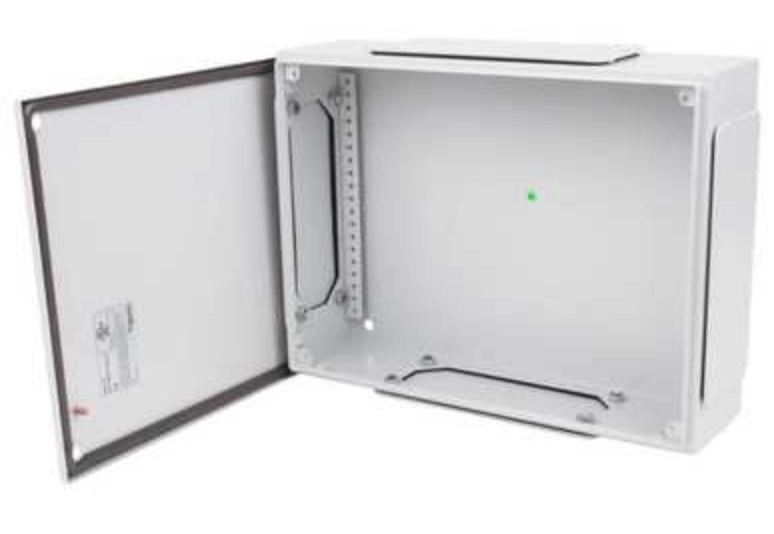
IP55 enclosure
What is the difference between IP54 and IP55?
These two IP ratings are exactly the same in terms of dust protection, but IP55 can take on pressurized water spray, whereas IP54 is good only for splashes.
Both are very similar, but if your business involves a lot of water, then IP55 is better than IP54.
What is associated with the letters after the main IP code?
As we already mentioned the “X” means that there is no available information, or that it is irrelevant or replaceable.
There are 2 sets of optional letters you can add after the digits. The additional set – A, B, C, D – describes the protection of the enclosure against tampering.
A stands for protection against the back of a hand; B stands for protection against a finger; C stands for protection against access with a tool, while D indicates for protection against access with a wire.
The supplementary set of letters – H, M, S, W – tell the user what the enclosure is for.
H tells that the enclosure can serve for a high-voltage device; M indicates that the device inside the enclosure was moving during a water test, whereas S means the opposite – that it was standing still.
Finally, W means that the enclosure is weather-proof.
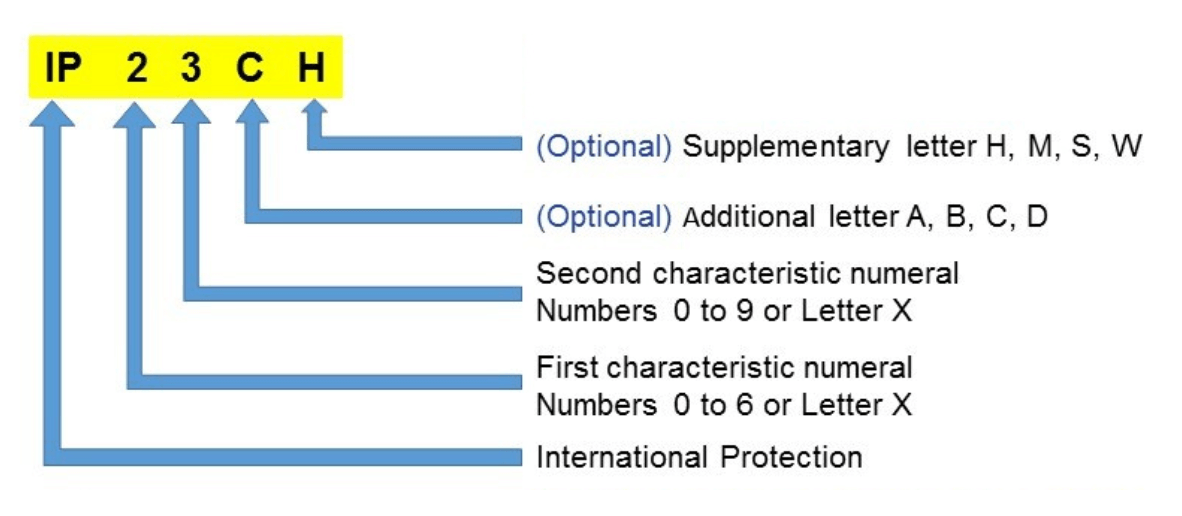
The full IP code
You can use these to indicate what features you want your IP55 enclosures to have.
These are mainly used for better communication between the client and the manufacturer.
What testing do IP55 enclosures undergo?
IP5X is tested using a closed space where a vacuum attracts a lot of dust and different powder that is blown all around to the enclosure for 8 minutes, and then the enclosure is checked for dust ingress.
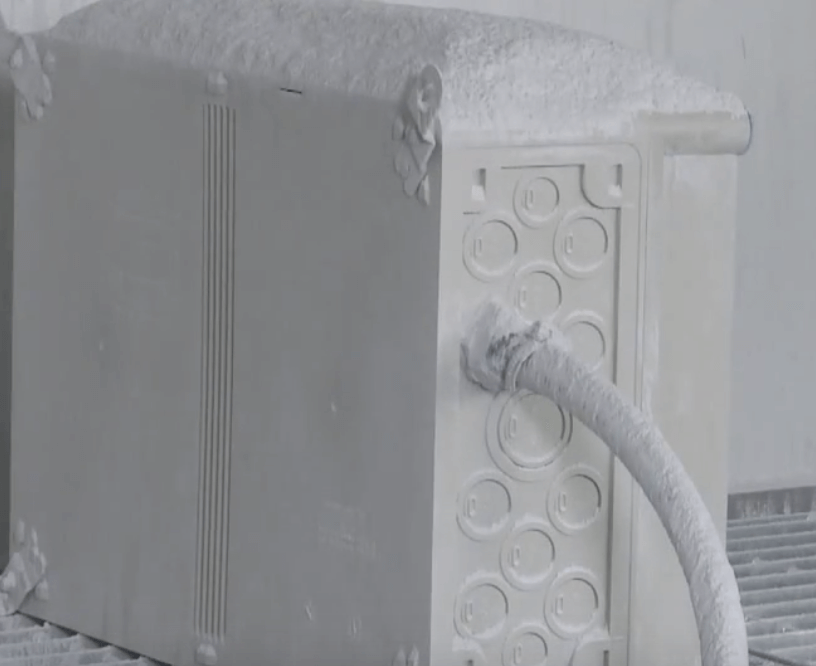
Dust chamber testing
IPX5 is tested using spray nozzles with oscillating tubes that pressurize and spray water at 12.4 liters per minute for 5-10 minutes in any imaginable angle.
IP55 enclosures can also be submerged underwater for 2 minutes.
Can IP55 standards be converted into any NEMA type?
As for NEMA, we offer any type, starting with 1 and up to 13, including subtypes, such as 3X.
Our NEMA enclosures are protected against weather, corrosion, coolant seepage, chemicals, and much more.
IP ratings and NEMA types cannot be directly converted into one another, but they can be loosely compared as shown below.
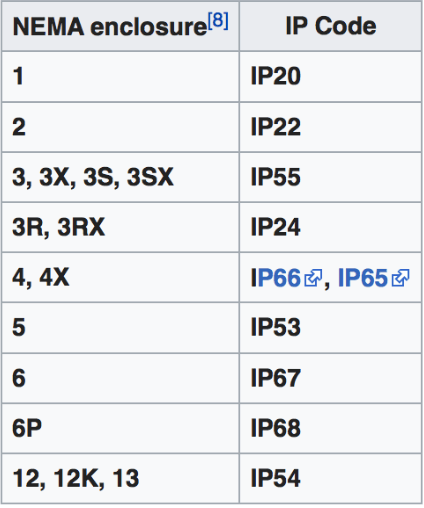
NEMA and IP ratings comparison
As the table shows, there is a close similarity between IP55 and NEMA types 3, 3X, 3S, and 3SX. Types 12, 13, and 5 are also fairly close.
This type is used outdoors, protecting against rain, dust, snow, and sleet. It is often used with junction boxes.
The type 3X is extra corrosion-resistant. Type 3S is aimed to protect from ice.
And, type 3SX has both properties.
Thus, you can get all this with IP55 as well.
Is IP55 enclosure suitable for outdoor use?
IP55, just like our other IP enclosures, is suitable for outdoor applications because it is protected against dirt, dust, and low-pressure water sprays from any direction.
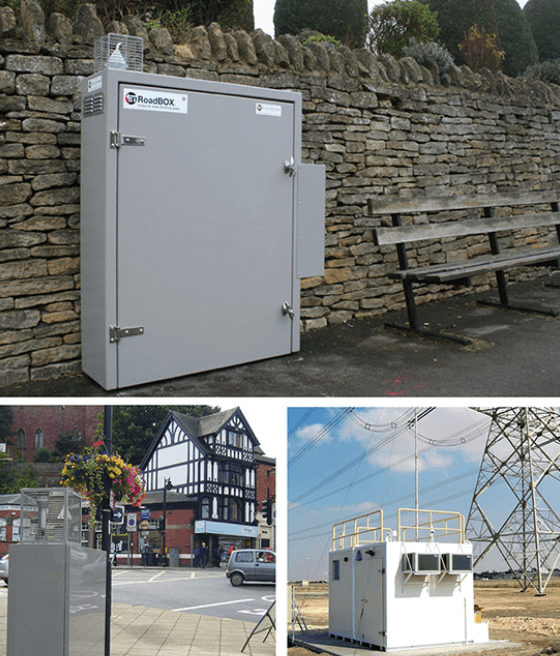
IP55 enclosures outdoors
However, keep in mind that these enclosures are not entirely dust-tight and waterproof, so very dusty or underwater environments may be too harsh for it.
If you need that, check out our IP65 enclosures.
Additionally, our IP55 enclosures are suitable for mild marine environments due to its ability to withstand pressurized water spray and corrosion.
Are IP55 enclosures waterproof?
Yes, but only under certain conditions. This enclosure will protect your electrical components only if the water spray is not very pressurized.
However, it can be from any direction.
Thus, IP55 enclosures are great for splashing water, rainstorms, water jets, and snow.
It may not be waterproof, but it is sufficiently weather-proof.
Will IP55 enclosures protect against explosions and arc flash?
Unfortunately, IP55 enclosures are not strong enough to contain an explosion or an arc flash.
They are not comparable to NEMA types 7, 8, 9, or 10.
These enclosures need to withstand high impacts and high temperatures.
As for arc flash, enclosures typically can’t protect from that, so personnel needs to keep that in mind.
However, if you need an explosion-proof enclosure, contact us and we will engineer it for you!
How well will IP55 enclosures protect electrical components against corrosive agents?
IP55 is not fully waterproof, so it may not protect against corrosive agents if they are strongly sprayed on it or submerged in.
If they are just splashed, then there is no problem, but corrosive fumes may still get in because some dust does.
The material is plays its role as well – aluminum and stainless steel are the most corrosion-resistant materials.
Are IP55 enclosures vulnerable to thermal hazards?
KDM IP55 enclosures are equipped with double-wall technology, a thermal chamber, insulation, heat strips, heat exchangers, and vents with air conditioning.
All this provides protection from the electrical heat and solar radiation to prolong the life of electrical components within the enclosure.

Double wall technology
Plus, thermal management reduces hot spots, equalizes pressure, and minimizes condensation, which can damage electronics and various devices.
Where can IP55 enclosures be used and for what applications?
IP55 enclosures can be used both indoors and outdoors in non-hazardous environments.
IP55 enclosures are commonly used in traffic control cabinets, especially railway.
Also, various outdoor metering boxes, distribution boards, and telecom enclosures with low-voltage TV or internet fiber cables.
This IP rating is perfect for outdoor environments because it is rain-proof and sufficiently protected against dust ingress.
IP55 enclosures are also well protected against tampering, just as any IP5X enclosure is.

IP55 outdoor cabinet
Some other applications include medical equipment, like a CPR machine, and even medications.
Furthermore, if DIN rails are installed, the enclosure can house circuit breakers for industrial equipment.
What designs of IP55 enclosures can I choose from?
We are pleased to offer you countless designs of free-standing enclosures, floor-mounted, wall-mounted enclosures, recessed enclosures, junction boxes, and custom enclosures.
Free-standing enclosures are perfect for large electrical units that are too heavy to be wall-mounted or pole-mounted.
They could be of any height and width.
They are also portable and can be walk-in enclosures.

Free-standing enclosure
Floor-mounted enclosures are very similar to free-standing enclosures, only floor-mounted ones are secured to the floor – thus, they are not portable.
If you are mounting them into concrete, a guide plate or pedestal is needed.
Wall-mounted enclosures use mounting brackets, screws, and pads.
They are perfect for small devices, and thus are cost-effective.
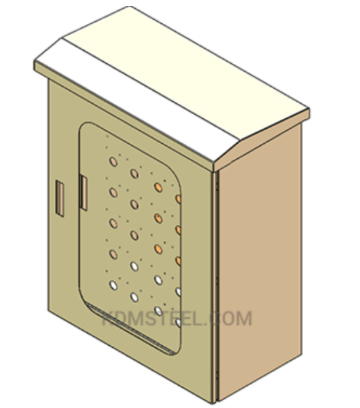
Wall-mounted enclosure
Recessed enclosures are mounted into the wall or the floor, taking up minimal space.
These are especially popular with telecom and control panel enclosures.
Junction boxes and operator interfaces are usually enclosures on a stand.
They have user-friendly layouts, are great for small electrical units, and can be portable.
These are the most common with IP55 enclosures that are used for control panels.
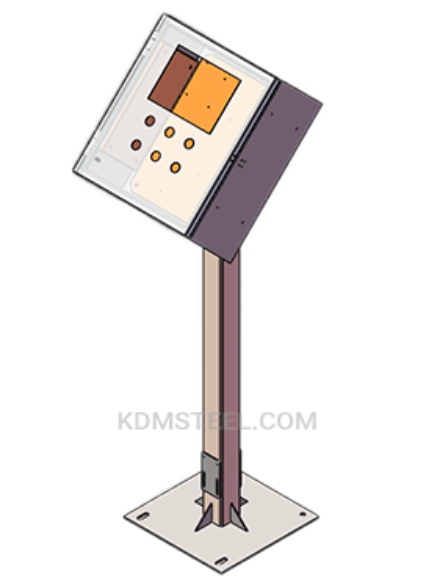
Junction box enclosure
Of course, we also have our custom enclosures, which can be of any design, shape, and requirements.
How many doors can an IP55 enclosure have?
Single doors are perfect for smaller and less complex electrical units, whereas double doors are used for large and complex units.
Multiple doors are used for huge industrial applications or for increased security.
If you would like a consultation on our designs, you are welcome to reach out to us!
What features can I request for IP55 enclosures?
You can request vents, windows, hinged doors, locks, cable management systems, and much more.
Vents, as well as radiating fans, provide a path for heat to escape through, cooling electrical components of the enclosure.
This prolongs their life and decreases the possibility of malfunctions.

Radiating fan in an enclosure
These also stabilize air pressure inside the enclosure, preventing condensation which can damage the electrical components of the enclosure.
Plus, the vents can be further upgraded to air conditioners and heat exchangers.
Windows help personnel examine the electrical components in a quick and non-invasive way.
And if something goes wrong, a window helps to see what is happening right away. Plus, infra-red windows help protect workers from arc flash accidents.
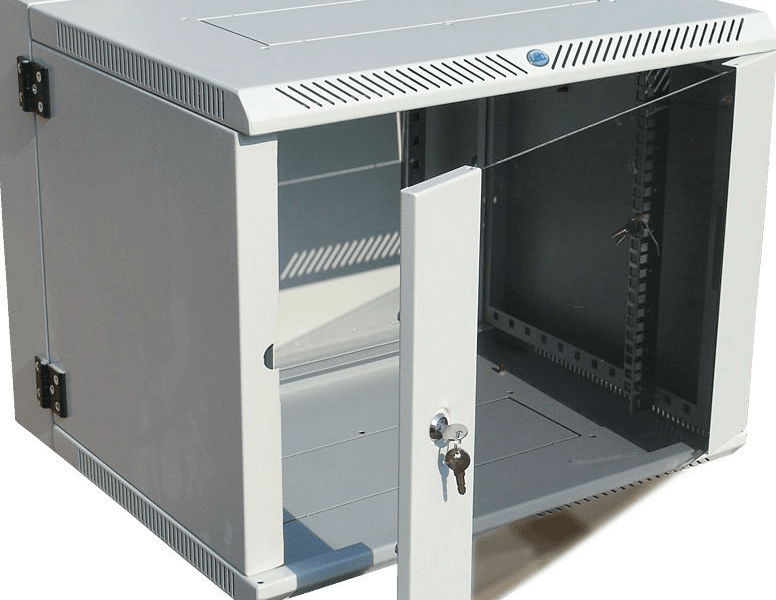
Enclosure with a window
Hinged doors control how and how much the door or cover of the enclosure opens.
This also includes a variety of handles that you can request as well.
Locks add a layer of security to your IP55 enclosure, making sure no one tampers with it or accidentally accesses its electrical components.
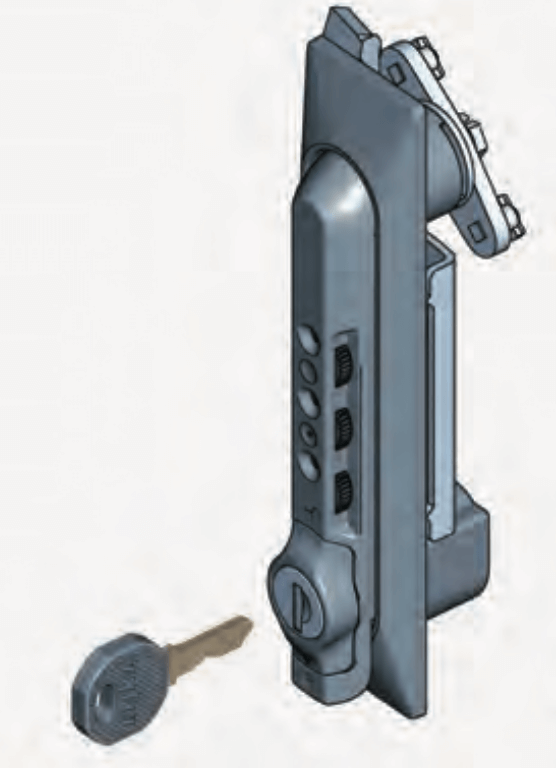
Lock
What accessories can I request for IP55 enclosures?
File pockets are used to store files like operating manuals, shift logs, information booklets, and anything else important that pertains to electrical components within the enclosure.
If your enclosure is intended for the outdoors, then the file pocket should be inside the enclosure, but if it is intended for the indoors, then it does not matter.

File pocket
Cable management systems such as cable entry frames and clamps serve to keep wires organized and make them easier to install and maintain.
Smaller accessories that you can request for IP55 enclosures include solar shields, rain caps, and lifting eyes.
Solar shields are basically another layer on top of an enclosure that reflect solar radiation, controlling inner temperature of the enclosure to prolong the life of its electrical components.

Solar shield (the top plate)
Rain caps are the top parts of an enclosure.
They can be flat, but protruding forth more than the enclosure, or they can be tilted like a roof.
They help divert streams of rain off of the enclosure so the rest of it gets less exposure to the rain. This prolongs the life of your enclosure.
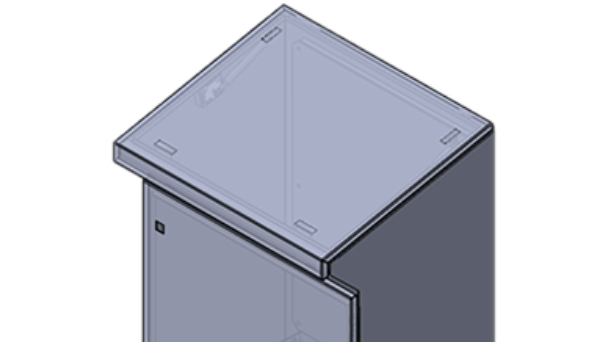
Rain cap
What different types of steel can be used for IP55 enclosures?
The materials used for IP55 enclosures aren’t different from materials used for other types of enclosures.
We also make casters, thermometers, light switches, lifting eyes, DIN rails, operator devices, and purpose-specific features like keypads and heat exchangers.
To learn more, feel free to contact us for more information about all the different features and accessories we offer! We will also provide any custom feature you request.
Do locks, windows, vents, and hinges lower the IP rating?
Yes, features like vents, windows, and locks do somewhat compromise the IP rating, but there are ways around it.
But KDM overcomes this difficulty, offering you some of the best enclosures for your business.
We incorporate various gaskets, PU seals, latches, and filters to balance out the IP rating.
They can be made from carbon steel, galvanized steel, and stainless steel – usually of the grades 304, 316, or 316L.
Carbon steel is usually duller than stainless steel. It is also magnetic and more malleable since it only has iron and carbon.
This steel is also prone to corrosion.
Stainless steel is created by adding chromium, nickel, and molybdenum to the iron-carbon alloy.
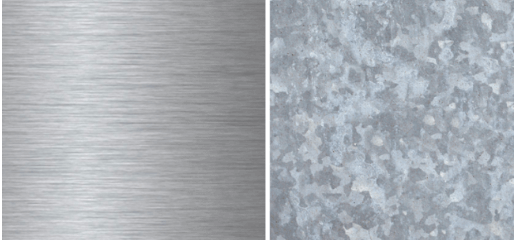
Stainless steel vs. galvanized steel
Steel grades 304 and 316 differ in the content of all additives.
Grade 316 is slightly stronger and resistant to saline and acidic water because of molybdenum.
But grade 304 is cheaper and more common.
Grade 316L has a lower carbon content, making it a little bit stronger.
Galvanized steel is coated with a protective layer of zinc that prevents corrosion.
We have galvanized steel enclosures, and this metal is vulnerable to saltwater.
Please note that galvanized steel is more expensive and heavier than stainless steel.
Another type of steel that can be used is cold-rolled steel, which is thinner and denser than normal steel – and thus, it is stronger.
If you would like to learn more, send in your inquiry now for a consultation!
Can fiberglass be used for IP55 enclosures?
Fiberglass is very strong, can dissipate heat, and insulates electricity, lowering the effect of interference and the possibility of shock.
It is made from glass fibers placed in plastic.
Fiberglass enclosures can be up to IP65, so IP55 is possible.
Fiberglass is also effective against corrosion.
Speaking of plastics, we can include windows made from polycarbonate and ABS.
Polycarbonate is more resistant to corrosion, whereas ABS is cheaper.
Why use aluminum for IP55 enclosures?
IP55 enclosures can also be made from aluminum alloys.
They are not necessarily better than steel alloys, but can be depending on what you are going for and what are your needs.
Just like steel grades, aluminum alloys can be either of the 5052 or the 6061 series.
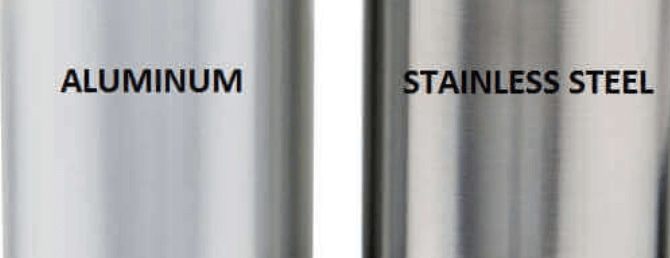
Aluminum vs stainless steel
Both are lightweight, but 5052 is more weldable, whereas 6061 has a higher resistance to corrosion.
Also, 6061 is more expensive.
Aluminum has a layer of oxide on top that prevents any corrosion.
This material is especially good for enclosures exposed to solvents, petrochemicals, some acids, most sulfates, and nitrates.
So, if you are looking to put IP55 enclosures in such mildly hazardous environments, aluminum is good for that.
What paints and coatings can be used for IP55 enclosures?
Our enclosures are well-protected, but the right coating can add its protection as well.
You can choose enamel or powder paint coats in any color.
Enamel paint has a glossy finish and is resistant to different weather conditions.
Specific enamel paints like epoxy enamel and PU enamel are commonly used for industrial enclosures since they are resistant to corrosion.
Powder paint is deposited with electrostatic force and is quicker and easier than enamel.
It is also more flexible in appearance, giving you the option of glossy and matte finishes.

Powder coating finishes
We also offer anodizing and also dining coatings.
Anodizing coating uses anodes to oxidize a metal, usually aluminum, to increase its thickness for better corrosion resistance.
Steel is not typically anodized because it can actually speed up the corrosion of the metal.
Alodine coating, also known as the chromate conversion coating, is used to prime steel and aluminum for paint, as well as prevent corrosion.
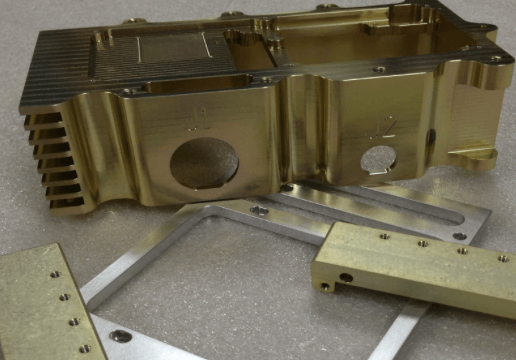
Alodine coating
This is a cheaper process than anodizing and can be recognized by its characteristic greenish-yellow hue unless it is painted over.
We can provide any coating in any color and finish, so contact us today!
How do you customize the symbols or writing on an IP55 enclosure?
Our customizing services include engraving, silk screening, electropolishing, and passivation.
Silk Screening is the easiest and most affordable method to customize an enclosure.
Any flat side of the enclosure can be silk-screened with labeling operators, serial number, company name and logo.
Examples of operators include emergency stop and gas detection among others.
However, silk-screening on metal like stainless steel or aluminum can be worn off or scratched off, but a clear powder coat helps to prevent that.

Silk screening
Engraving the enclosure is another method of customizing your enclosures.
This option is more costly and takes more time, but it is also more long-term than silk-screening.
A little bit of metal is removed from the surface of the enclosure in the design of the logo or symbol.
Usually, about 0.005 inches or 0.010 inches of metal is removed.
Once the metal has been removed, it is filled in with epoxy paint of any color to match your requirements.
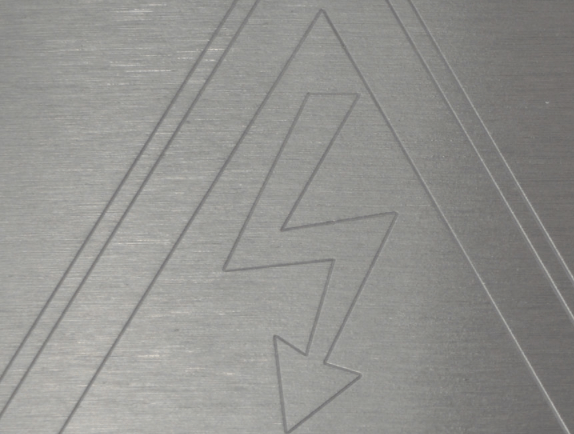
Engraving
Electropolishing is an electrochemical process where the top layer of the metal carefully corrodes, smoothing the surface.
This improves the finish of the enclosure, making it more shiny. You can request custom finish, and we will design it.

Polishing an enclosure
Passivation is the reverse process of creating a shielding non-reactive layer, so the metal does not corrode as much.
There can also be anti-graffiti and anti-poster coatings to protect your IP55 enclosure from vandalism.
Recent IP55 Electrical Enclosure Order
FAQS
What is An IP55 Enclosure?
IP55 rated enclosure means that your equipment is protected from dust, dirt, non-corrosives, and oil.
However, the IP55 enclosure is not air-tight.
It only penetrates dust size elements in non-harmful quantities.
What Does IP55 Rating Mean to Enclosure?
IP55 certifications make your enclosure water-resistant but not waterproof.
The first digit rating (5) means the enclosure is not fully closed off to dust.
The second digit rating (5) means the enclosure might not be waterproof.
IP55 rated enclosure protects from low-pressure water jets.
What Protection Does IP55 Enclosure Provide?
Below are the following protections could IP55 enclosure provides:
- Protection from dust, oil, dirt, and non-corrosives
- Protection from moving parts and voltage for people contacted with the enclosure
- Protection from water, such as water sprayed from nozzles to the enclosures
What Are the Materials to Construct IP55 Enclosure?
IP55 enclosure is manufactured from premium-grade materials.
They are available in carbon steel, galvanized steel, aluminum, and stainless steel.
Does IP55 Enclosure be Customized?
Yes of course. Many manufacturers offer customized solutions for IP55 enclosures.
It can be customized with insulation, cutouts, latches, hinges, or locks.
How Can I Mount IP55 Enclosure?
You can mount your IP55 enclosure vertically or horizontally.
Does IP55 Enclosure Suitable for Outdoor Use?
Yes. IP ratings between 44 and 65 are suitable for general outdoor and indoor use.
IP ratings lower than 44 should use only indoors.
What is the Difference Between IP55 and IP65 Enclosure?
IP56 Enclosure
There’s no harmful effect when water is projected by nozzles from any direction against the enclosure.
IP65 Enclosure
Water jets or heavy seas water in any harmful quantity are not allowed to enter the machine.
How Can I Get IP55 Certification and Testing for the Enclosure?
There are various processes to get certifications and testing for IP55 enclosure.
We can do IP55 enclosure testing according to IEC EN 60529 standard.
Types of IP55 Testing
- IP55 dustproof testing
- IP55 waterproof/rainproof testing
1. IP55 Dustproof Testing Method
A dust chamber is used to test the enclosure.
The talcum powder needs to maintain the suspension through an air current.
This chamber must contain a powder weighing 2 kg per cubic meter in terms of volume.
The talcum powder must pass through a 50-um diameter square-meshed wire and 75 u m nominal free distance.
2. IP55 Waterproof/Rainproof Testing Method
The second digit IP rating is tested with the 6.3mm nozzle.
The enclosure is sprayed from all practicable directions with a water streams from standard nozzles.
Conditions to be observed
- 6,3mm nozzle’s internal diameter
- 12,51/min±5% delivery rate
- Water pressure
- Approximately 40mm diameter substantial stream circle core at 2.5 m distance away from the nozzle
- 3 minutes minimum test duration
- 5m and 3m distance of enclosure from the nozzle
What is the Available Mounting Style for IP55 Enclosure?
IP55 enclosure is available in wall-mounted, free-standing, floor-mount, etc.
What is the Common Application for IP55 Enclosure?
IP55 enclosure is ideal for different areas such as:
- external plant
- house electronic equipment
- telecommunication equipment
- industrial process control
- bespoke application
- food and medical equipment



